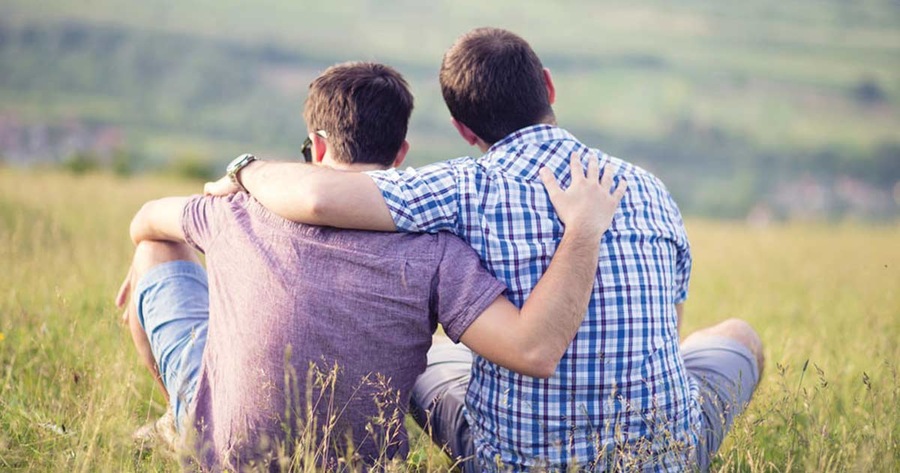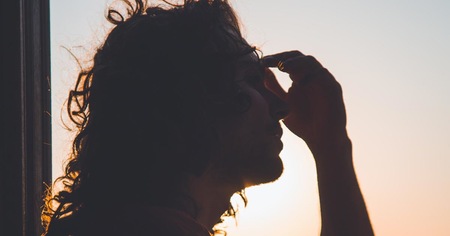In high school, an English teacher introduced me to early feminist texts and other women's literature that opened up my world. I credit her with helping me take the first step on my journey to coming out. Those books showed me that life wasn't binary and there were all these different ways of being – and that they were all valid.
Being inclusive means that we are actively working to create safe, welcoming spaces for all people through our words and actions. Sometimes what an LGBTQ youth needs is for one adult to step up and demonstrate that every person matters in that space, exactly as they are. It's not about telling a young person they're gay or defining their identity for them. It's about letting kids know that we see them, and we accept them for whoever they are or may turn out to be, as they continue to explore.
A universal truth of human development is that we all need to be seen, heard and valued. For LGBTQ youth, finding that acceptance at school and home can be an impossible hill to climb. According to GLSEN's 2017 National School Climate Survey, 59.5% of LGBTQ students felt unsafe at school because of their sexual orientation, 44.6% because of their gender expression and 35% because of their gender. LGBTQ youth are also more likely than their peers to be forced to leave their homes, accounting for a disproportionate 40% of the youth homeless population.
These negative outcomes are solvable when we choose to be inclusive as friends, family members, youth development professionals, and in any other role that brings us into the lives of young people.
During Pride Month this year, Boys & Girls Clubs of America has released a new inclusion statement that underscores our continued commitment to doing whatever it takes to position our youth for great futures, including young people of every gender, gender expression and sexual orientation. We've also made programming and trainings available to help Club staff learn how to best support LGBTQ youth. Some Club members have even taken the lead themselves by starting GSAs (Gender & Sexuality Alliances), which unite LGBTQ and allied youth to act as advocates for trans and queer young people in their Clubs and larger communities.
There is much work still left to do to support equity for all, and Boys & Girls Clubs of America is committed to being part of the solution by providing emotionally and physically safe spaces for the 460,000 kids that walk through our doors daily. It will take all of us, actively promoting inclusive, affirming spaces in our personal and professional lives, to ensure that all members of the LGBTQ community, especially our youth, feel welcome and supported. Here are a few recommendations for how to become part of the solution with a young person in your life:
1. Educate yourself. Make an effort to learn more about the rich history and diversity of the LGBTQ community. Organizations like GLSEN, Human Rights Campaign and The Safe Zone have resources available that cover a range of topics, from current issues facing the community to the best way to respond when someone comes out to you.
2. Ask questions. Don't let fear of saying the wrong thing keep you from doing the right thing. Many people regret their initial response to their child, student or friend when they identified as LGBTQ. Take the first step by apologizing. Ask how you can change your actions or language to create a more welcoming space and follow-through on what they've requested.
3. Listen. "Give kids the space to develop and use their voice," advises Patrick Mahoney, Director, Organizational Development, Major Metro for Boys & Girls Clubs of America and former member of the development committee for The Trevor Project. "If you're authentic and lead with your heart, it will help kids feel that they belong and they will open up. Be on standby ready to listen."
4. Affirm. It costs nothing to simply tell a young person, "You are perfect just the way you are." It's probably the thing that kids most need to hear from the adults in their lives.
5. Promote representation. "Support and encourage conversation around books, movies, music and other forms of media and activities that feature LGBTQ themes and intersectional voices within the community from different racial, ethnic and socio-economic backgrounds," Patrick shares. "Young people will be inspired by seeing positive LGBTQ role models, and that will promote inclusivity among their peer groups and later in life."
6. Shutdown anti-LGBTQ behavior. Speak out against anti-LGBTQ remarks and behaviors. When you see young people engage in any bullying behavior, intervene every time. When you hear friends or co-workers telling non-inclusive jokes, ask them to stop using hurtful language.
Learn more about Boys & Girls Clubs of America's resources for LGBTQ youth, families and allies.
Jennifer Bateman manages health, gender and wellness programming as the National Vice President of Youth Development for Boys & Girls Clubs of America. She received her Ph.D. in Applied Psychology and Human Development from University of Pennsylvania.
This article was republished with permission and originally appeared at Boys & Girls Clubs of America.
Photo courtesy of Boys & Girls Clubs of America.




